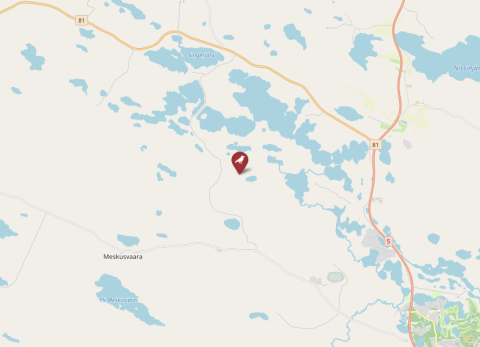| Species |
Siberian tit |
| Start year |
1982, intensive monitoring 1998 - present. |
| End year |
NA |
| Continuous collection of data |
Yes |
| Gap years |
NA |
| Longest data collection |
38 |
| Parental ID's recorded |
Yes, by (re)capturing and mainly by using the combination of plastic coloured rings and numbered metal ring. |
| List of basic breeding data collected |
Layday is based on visits during the egg laying period or based on the age of nestlings at first visit and by using a standard incubatioin time (14 d). Exact clutch size is available for some years. Hatchday of the young is based on the age of the nestlings at first visit to nest boxes. The age of the age of the hatchlings is based on their appearance (visited around the true hatching data) or wing length (older nestlings). Number of hatchlings available for most of the years, number of unhatched eggs available, causes of nesting failures at egg or nestling stage available. Each year since 1998 all parents have been identified by ring numbers or by binoculars (aluminium and coloured plastic rings). Number of ringed young and number of fledged young is available. |
| Description of the protocols for breeding data collection |
Data collection protocols on species breeding in nest boxes is available e.g. Orell & Ojanen 1983. Ardea 71: 183-198 and Orell & Ojanen 1983a Ann. Zool. Fennici 20: 99 - 114 for Great tit. During routine visits starting in May or June, we located the boxes occupied by Siberian Tits (and other competitive species Pajor and Ficedula hypoleuca) and collected breeding data. Exact breeding parameters, laydate, clutch size, date of hatching, data were available from 1998-2009. In other years most of the clutches had already hatched during our first visit. Then, for the nests found at the nestling stage (usually aged 3 - 10 d), the commencement of egg-laying was estimated by calculating back from the hatching date by using the age of the young during the first visit, the number of nestlings as an estimate of the clutch size and assuming 14 days for incubation. Wing-length was used as the criterion for ageing the chicks (day 0 = hatching day). We assumed that females lay one egg per day. When at least seven days old, all nestlings were ringed with numbered rings. For most of the nestlings we have taken biometrical measurements at the age of 17 days; body mass, wing, tail and tarsus lengths, and estimated the amount visible subcutaneous fat since 1998. During the same visits, parents were captured for ringing or identification and they were measured as described above. Sexing of the parents based on the presence of a brood patch. |
| Description of the protocols for taking individual level measurements |
Orell 1983 Ornis Fennica 60: 65 - 82 |
| Experimental manipulations |
No |
| Description of experimental manipulations |
NA |
| Predation events recorded |
Mostly yes, coded as the cause of nest failure at egg or nestling. |
| How are second clutches recorded? |
Never observed second broods. |

